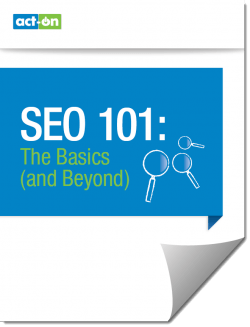The next article in our five-part series on how to conduct an onsite SEO audit will focus on that ever-important, and sometimes forgotten, step of improvement. Identifying, fixing and monitoring the progress of your organic search visibility must be a continuous activity. “Kaizen”, the Japanese concept of continuous improvement and managing by facts, very much applies here.
There’s always something to improve in SEO; the real question is what are you going to tackle first?
Establish Your Priorities
So far in our multi-part guide to conducting an audit we have shared a checklist, advised about data to measure, and offered resources to help you dive a bit deeper into your issues.
As you looked at your keyword strategy, on-page SEO, page load speeds, backlink analysis, navigation and priority, mobility, the relevancy of your outbound links, content quality, local search, and social media, what did your site tell you about what you are, and aren’t, doing well?
One you’ve built the list of things that aren’t working as well as they should, you need to prioritize what you’ll fix first. Lindsay Wassel, a prior Moz-er and awesome SEO recommends using this SEO scorecard if you’re struggling to figure out prioritization. The scorecard works on a five-point rating scale and assesses the website’s key pages in columns against a hearty list of categorized SEO factors in rows. This method can help you determine the best way to create those all-important action items … not to mention that you’re also creating a system that can aid in project management.
At Vertical Measures, this is how we determine priorities: Strategists meet with Technical Directors to collaborate and discuss findings, and then our team ranks priorities in high, medium and low segments. We keep competitive data and important KPIs up front and center, in an effort to keep everyone on the same page with what our true objectives are.
Regardless of the system you decide to use, do what you can – now – to set yourself up for success as you follow through with improvement. Prioritization can lead you to create an effective timeline that might come in handy to share with executives too.
Fail Fast & Move On
Subjectivity abounds in SEO, it’s the nature of the beast. Couple that with the ever-changing landscape and you’ve got quite an unpredictable combo. Many experts remind us that we must take risks, test, and fail fast. Moving on to test more and keep motivated is a struggle, but it doesn’t have to be.
Attitude plays a big part. Having a tolerance for failure and creating a positive outlook are important aspects of marketing in today’s digital environment. We’re lucky in the sense that we have access to data that helps us realize those failures and get better at signs telling us to change course, or abandon ship. Google’s Search Console and Bing’s Webmaster Tool dashboards, as well as website analytics programs (such as Google Analytics) and marketing automation platforms create an abundance of information. We are better armed today than traditional marketers of years past. Remember, failure today can make you a better SEO tomorrow.
Know When to Ask for Help
A wise person once said, “Be smart enough to know when you need help and brave enough to ask for it.” The best advice that I can give you is to know when to ask for help. So many aspects are involved in an onsite audit, it’s hard to expect someone to know it all.
There aren’t textbooks and degrees you can earn in the field of SEO – at least not yet, anyway. Much of my own experience has come through working with hundreds of websites over the course of my career, and trust me no two websites are the same. When you discover you need help in a specific area, go straight to an expert who has depth in the type of knowledge you’re looking for. Some are extremely well-versed in a particular ecommerce platform for example, or WordPress, Drupal, or another CMS environment. Others have experience fixing a specific program, such as a Penguin- or Panda- specific penalty. Some have found the right way to mix organic and paid search for a winning combination. Even the best professional SEOs seek out trustworthy SEO advice and answers from other specialists in our community of experts. No one knows it all.
So, there may come a time when you need to consult an SEO expert who understands your particular problem well. Rand Fishkin of Moz addresses this in a talk. (Or you could – ahem – just contact us at Vertical Measures.)
Continue to Look After Your Code
Jim Newsome’s 2008 article, “10 Fundamental Tips to Improve Your SEO” really hits the nail on the head – and guess what, almost everything he says has not changed in over seven years. The changes we see in SEO are ongoing, but the fundamentals largely don’t change.
Pay particular attention to his #3 comment about continuing to look after your code. Today we rely heavily on plugins, modules, etc., – someone else’s code. Our open source-based industry is ripe with the potential for that code not to work, or to leave us open to security issues.
Web developers, programmers, and SEOs should work together to effectively manage a site. If you’re the one leading the charge, ask questions. Get all parties together and collaborating for proactive forethought and the best results.
Remember: Your Work is Never Done
Your work is never done, from strategy development on through measurement the process is symbiotic and ever-evolving. If you prepare yourself now, with an understanding that this is a marathon and not a sprint, it will help you stay motivated in the long run. Watch out for next month’s last and final post in this series to discuss “rinse and repeat.”
Want to catch up with the previous three posts? Here they are:
Part 1: Do the Research
Part 2: Do the Analysis
Part 3: Take Action
And for an all-in-one SEO primer for companies of all sizes, get Act-On’s free SEO 101: The Basics (and Beyond), which will cover how search engines operate, best practices for writing SEO-friendly content, and how to choose keywords.



